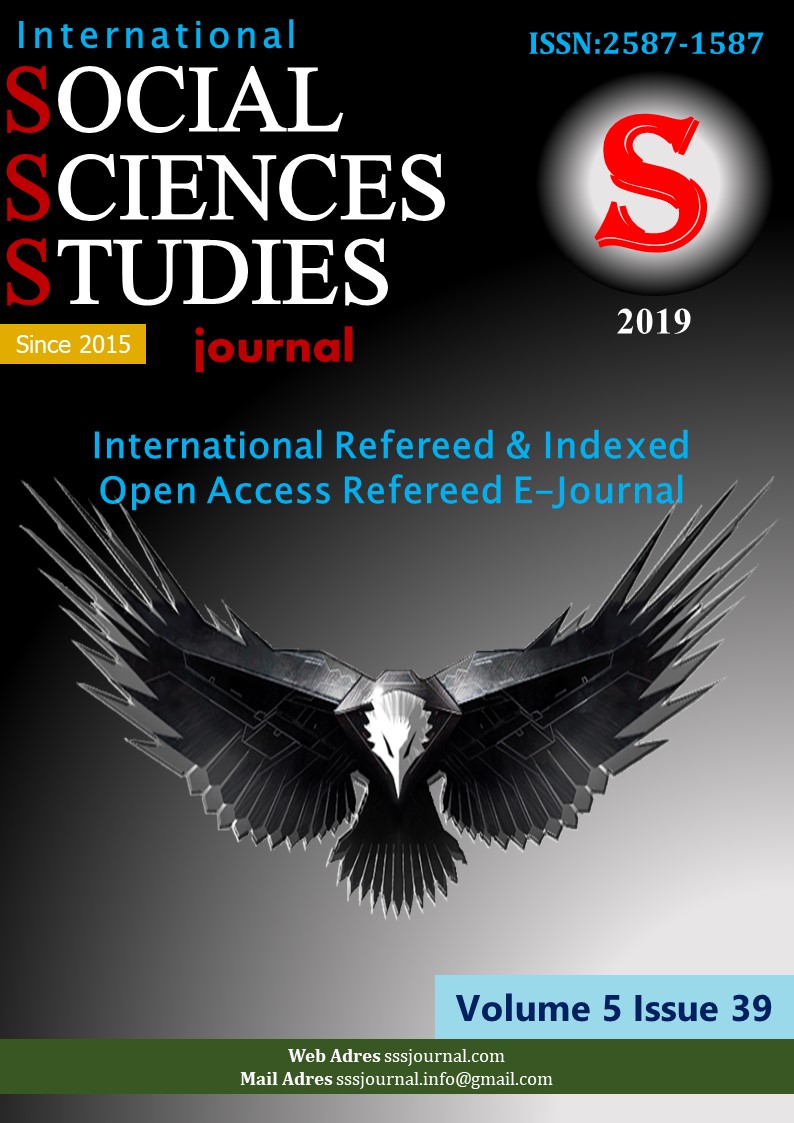Author :
Abstract
Amaç: Bu çalışmanın amacı; 8-11 yaş arası DEHB’li çocukların görsel motor algılama düzeylerine akıl oyunları, mikado oyunu ve bilgisayar oyunlarının etkisini araştırmak; yapılacak ön test, son test ve izlem testlerinin değerlendirmesini yapmaktır. Yöntem: Bu çalışma, 3 ayrı deney-kontrol gruplarının oluşturduğu ve ön test-son test ve izlem testlerinin uygulandığı yarı deneysel bir çalışmadır. Araştırmaya Kocaeli- İzmit’de 5 farklı devlet ilkokulunda öğrenim gören ve 2., 3. ve 4.sınıf öğrencilerinden katılan DEHB’li öğrencilerin toplam sayısı 96’dır. Araştırmada 16’şar kişilik deney ve 3 kontrol grubu bulunmaktadır. Deneysel uygulama 10 haftada gerçekleştirilmiştir. Öğrenciler gruplara ilk aşamada amaçlı örnekleme yöntemiyle, ikinci aşamada ise basit tesadüfi yöntemle atanmıştır. Veri toplama araçları olarak Bender-Gestalt Görsel Motor Algılama Testi ile Kişisel Bilgi Formu kullanılmıştır. Veriler iki faktörlü ANOVA, bağımlı örneklemler için t testi ve Bonferroni çoklu karşılaştırma testiyle analiz edilmiştir. Bulgular: Araştırmada uygulanan her üç oyunun DEHB’li öğrencilerin görsel algılama bozukluğu belirtilerini azalttığı görülmüştür. Sonuç: Araştırmada üç oyunun DEHB’li çocukların görsel algılama bozukluklarını düzeltmeye önemli bir katkı sağladığı görülmüştür.
Keywords
Abstract
Objective: The purpose of this study is to investigate the effects of mind games, mikado games and computer games on the levels of visual motor perception of children with ADHD between the ages of 8 and 11, to compare pre- and post-implementation assessments of to evaluate the pre-tests, post-tests and follow-up tests to be performed. Method: This research is a quasi-experimental research formed of 3 separate experiments and control groups, in which pretest, posttest and control group test are applied. The total number of students with ADHD who are studying in 2nd, 3rd and 4th grades of 5 different public elementary schools in Kocaeli-İzmit and who are participating in this research is 96. In the research there are 3 experimental groups and 3 control groups. Experimental application was carried out for a total of 10 weeks. The students were assigned to the groups with the purposive sampling method in the first stage and with the simple random method in the second stage. The data collection tools used were Bender-Gestalt Visual Motor Test, and Personal Information Form. The collected data were analyzed with two-way ANOVA, t-test for dependent samples and Bonferroni multiple comparison test. Results: İn the research, it is determined that three games applied have positive effects on the defect of visual perception. Conclusion: It has been observed in the research that all three games applied have a significant contribution the treatment of the defects of the visual perception of the children with ADHD.
Keywords
- Brannigan G.G. & Brunner N.A. (2002). Guide to the Qualitative Scoring System for the Modified Version
- Brannigan G.G. & Brunner N.A. (2002). Guide to the Qualitative Scoring System for the Modified Version of the Bender-Gestalt Test, Charles C Thomas Publisher, USA.
- Büyüköztürk , S. (2001). Deneysel Desenler, Pegema. Ankara.Devecioğlu, Y. & Karadağ, Z. (2016). ”Amaç, Beklenti ve Öneriler Bağlamında Zeka Oyunları Dersinin Değerlendirilmesi”, Bayburt Eğitim Fakültesi Dergisi, 9(1): 41-61.
- Kariyer Koleji (2015, Temmuz 26). Akıl Oyunları dersi. 26 Temmuz 2015’te http://kariyerkoleji.com/ ilkokul/? page_id = 4943 adresinden indirildi.
- Kılıç, B.G. & Şener, Ş. (2003). ”Dikkat Eksikliği Hiperaktivite Bozukluğu Alt Gruplarında ConnersÖğretmen ve Anababa Ölçeklerinin Ayırıcı Özellikleri”, Çocuk ve Gençlik Ruh Sağlığı Dergisi, 10(2): 50- 1.,
- Kiriş, N. & Karakaş, S. (2004). ”Dikkat Eksikliği Hiperaktivite Bozukluğunun Zeka Testlerinden ve İlgili Diğer Nöropsikolojik Araçlardan Yordanabilirliği”, Klinik Psikiyatri, 7:139-152.
- Koppitz EM (2016, Eylül 18). The Bender Gestalt Test for young children [e-kitap sürümü]. 18 Eylül 2016’da http://psycnet.apa.org/psycinfo/1965-01740-000 adresinden indirildi.
- Mazzeschi, C. & Liss, A. (2000). ”The Bender-Gestalt Test in an İtalian Sample: a Analysis of Koppitz’s Developmental Bender Scoring System Deviations ” , Perceptual and Motor Skills, 90:373-385.
- Merrel, C.& Tymms, P.B. (2001). ”Inattention, Hyperactivity and İmpulsiveness: Their İmpact on Academic Achievement and Progress” , British Journall of Educational Psychology, 71: 43-56.
- Mikado Oyunu (2015, Kasım 12). Mikado çubuk oyunu.12 Kasım 2015’te http://tecrubelerimiz.com/q/mikado-oyunu/ adresinden indirildi.
- Miyake, A.; Friedman, N.P.; Emerson, M.J.; Witzki, A.H.; Howerter, A. & Wager, T. (2000). ”The Unityand Diversity of Executive Functions and Their Contributions to Complex “Frontal Tobe” Tasks: a Latent Variable Analysis ” , Cognitive Psychology, 41:49-100.
- Mukaddes, N.M. (1996). ”Çocuk ve Ergenlerde Bilişsel-Davranışçı Psikoterapilerin Etkinlik Düzeyleri ve Kısıtlılıkları”, Düşünen Adam, 9(4): 36-9.
- Murray, J.B. (2001). ”New Studies of Adults’ Responses to the Bender Gestalt”, Psychologicol Reports, 88: 68-74.
- Öner, P.; Aysev, A.; İçağasıoğlu, D& Deda, G. (2001). ”Dikkat Eksikliği Hiperaktivite Bozukluğu OlanÇocukların Nörolojik Açıdan Değerlendirilmesi”. Ankara Üniversitesi Tıp Fakültesi Mecmuası 54(4):301-Özaslan Uysal, T. & Bilaç, Ö. (2015). ”Dikkat Eksikliği Hiperaktivite Bozukluğu Epidemiyolojisi”, Türkiye Klinikleri J Child Psychiatry-Special Topics, 1(1): 1-5.
- ,Öztürk, Y.; Özyurt, G. ; Tufan, A.E. & Pekcanlar Akay, A. (2018). ”Dikkat Eksikliği ve HiperaktiviteBozukluğunda Duygu Düzenleme Güçlükleri ve Tedavisi”, Psikiyatride Güncel Yaklaşımlar, 10(2):188-Raggio, D.J. (1999). ”Visuomotor Perception in Children with Attention Deficit Hyperactivity Disorder- Combined Type”, Perceptual and Motor Skills, 88(2): 448-0.
- Risser, M.G. & Bowers, T.G. (1993). ” Cognitive and Neuropsychological Characteristics of AttentionDeficit Hyperactivity Disorder Children Receiving Stimulant Medications”, Perceptual and Motor Skills, 77(3): 1023-1.
- Shaffer R.J.; Jacokes, L.E.; Cassily JF Stanley I. Greenspan, S,I,; , Robert F. Tuchman, R.F. & Stemmer,P.J. (2001). “Effect of İnteractive Metronome® Training on Children with ADHD”. American Journal of Occupational Therapy, 55(2): 155-2.
- Soysal, A.Ş. & Özdemir, B. (2004). ”Dikkat Eksikliği ve Hiperaktivite Bozukluğuna Genel Bir Bakış ”, STED, 13(3): 89-0.
- Zorlu, A. (2012). “Denizli Kent Merkezinde İlköğretim Çağındaki Çocuklarda Dikkat Eksikliği Hiperaktivite Bozukluğunun Prevalansı ”,Tıpta Uzmanlık Tezi, Pamukkale Üniversitesi, Denizli.





